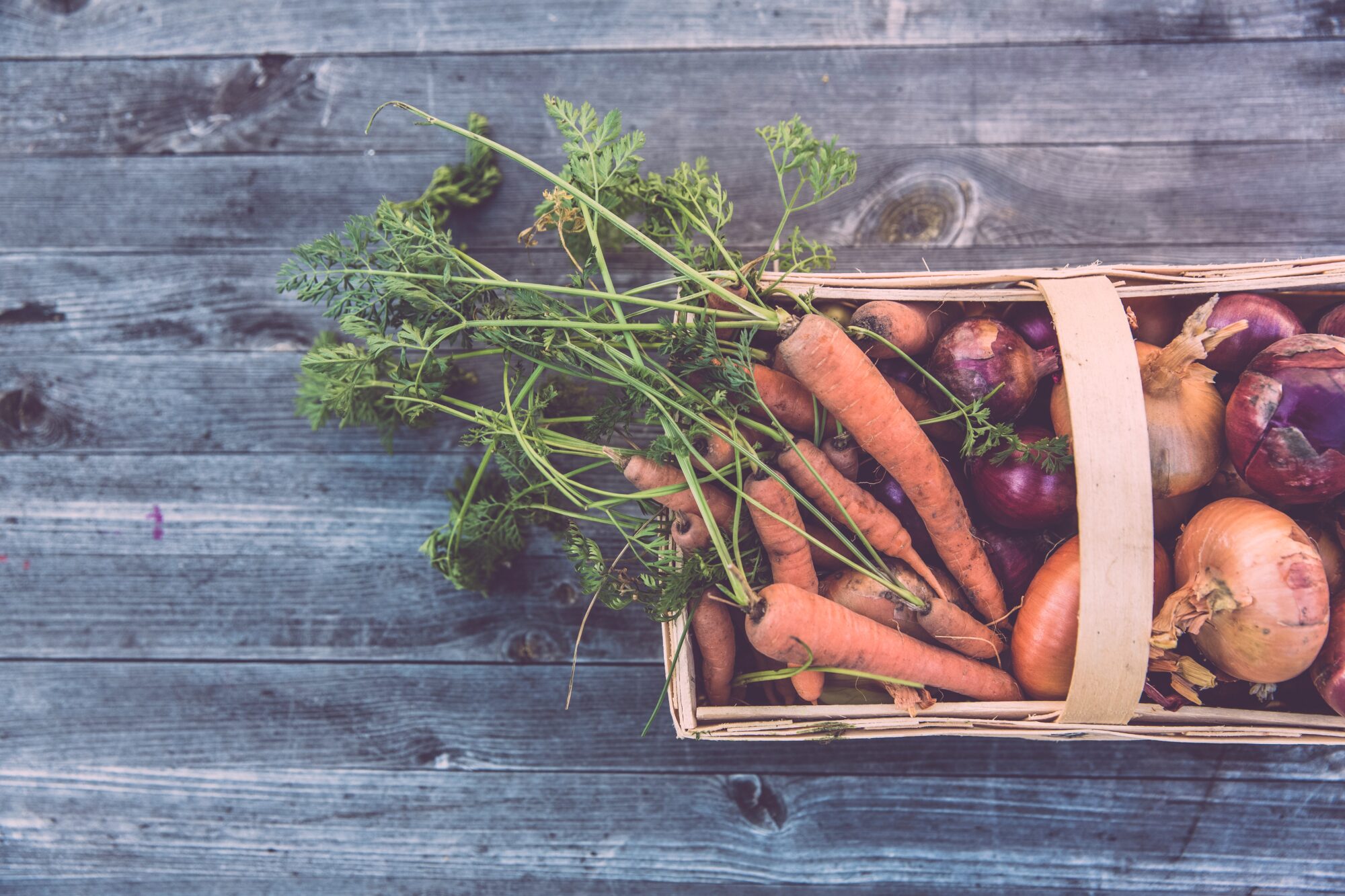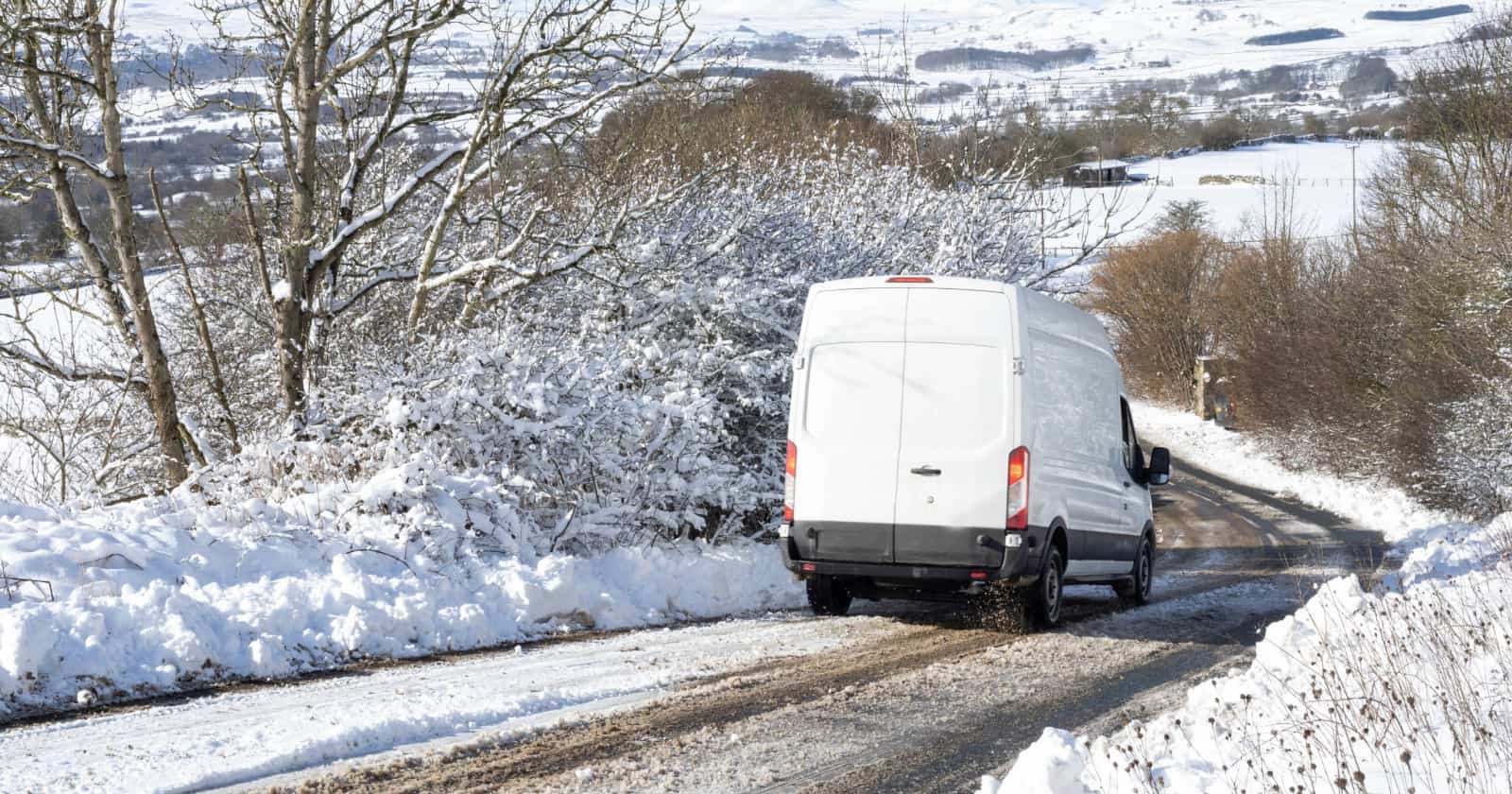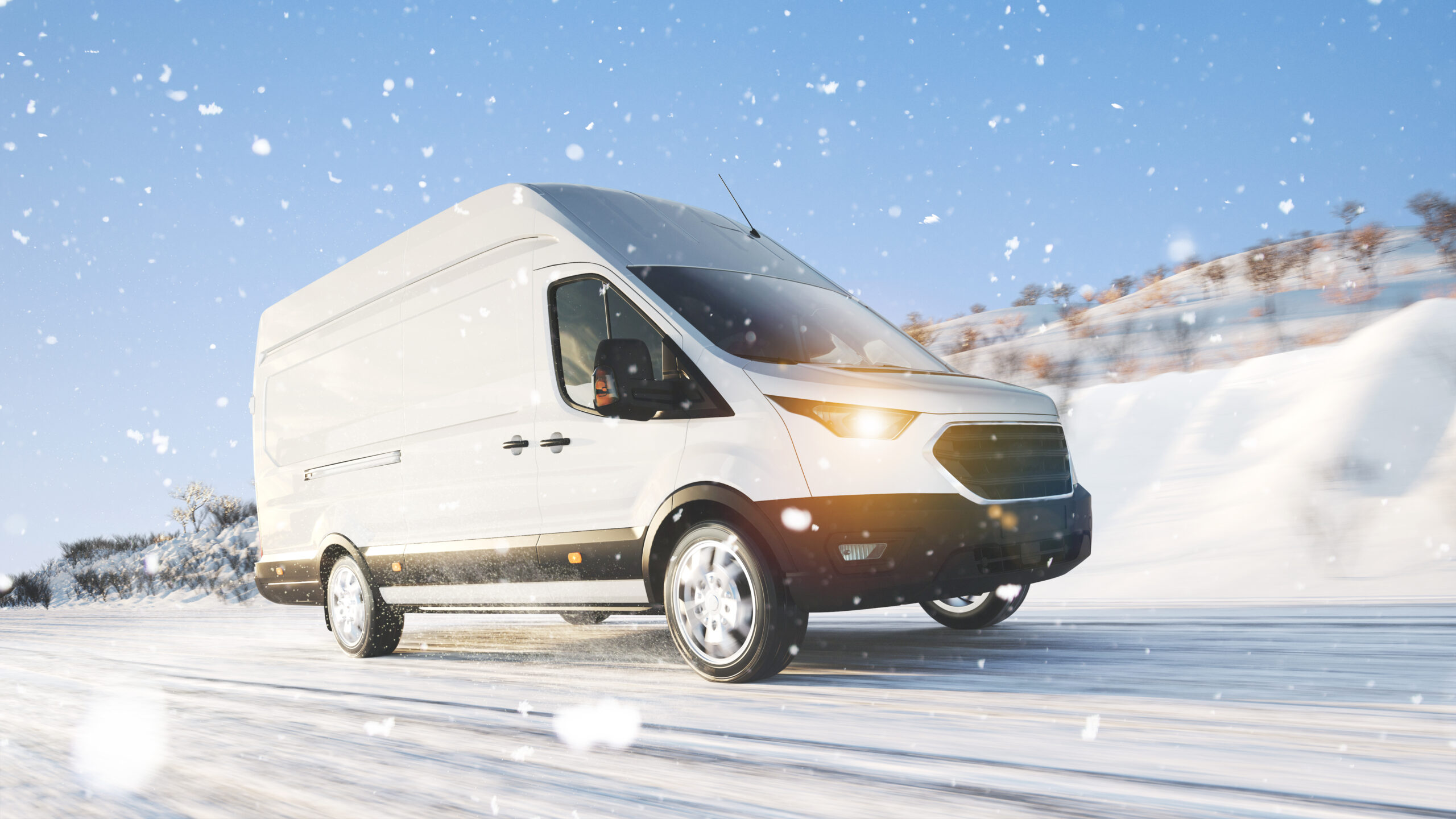We all know how important it is to nourish our bodies with healthy foods. Unfortunately, eating healthy on the road can be tricky. Limited food storage space means it’s much more difficult to keep lots of healthy foods on hand, and tiny kitchens make cooking some traditional meals a lot more difficult.
Winter time makes healthy eating on the road even more difficult, as acquiring fresh fruits and vegetables from sources such as roadside stands and farmers markets is no longer an option, and cooking outdoors becomes much less appealing.
Fortunately, there are ways to make healthy van life winter eating possible and even enjoyable! In this article, we will discuss some ideas for winter road trip meals and provide tips for healthy cooking in a van. Let’s dive in!
Essentials of a Healthy Van Life Kitchen
First, let’s talk about the tools and ingredients you’ll want to fill your tiny kitchen with in order to create nutritious RV recipes. Obviously, you don’t want to clutter your space with too many things, but filling your cabinets with these essentials will make healthy eating on the road a whole lot easier.
Must-Have Van Kitchen Tools
These are the items you really do need to have:
- Cooktop (induction or propane)
- Skillet
- Pot
- Spatula
- Can opener
- Knife
- Plates, bowls, and flatware
Fun-to-Have Van Kitchen Tools
The items below are not necessary but might make life easier. Just make sure they will be well used and that you have space for them:
- Moka pot or French press for brewing coffee
- Kettle
- Instant Pot pressure cooker
- Air fryer
- Toaster oven
- Measuring cups and spoons
Must-Have Ingredients for Winter Nutrition
These basic staples will allow you to make some super simple meals and will ensure you don’t go hungry, even if you forget to stop by the store:
- Beans (canned or dried)
- Lentils (canned or dried)
- Chickpeas (canned or dried)
- Nuts
- Hard cheeses
- Powdered milk
- Powdered eggs
- Canned meats/fish
- Peanut butter
- Rice
- Oats
- Quinoa
- Dried fruits
- Canned vegetables
- Bread/tortillas
- Spices and seasonings

Winter Nutrition: What Your Body Needs
Wondering what sorts of foods you should be eating for good winter nutrition as you travel? We’ll use this next section to discuss healthy eating on the road during the winter months.
Boosting Your Immune System
Nutrition plays a huge role in keeping your immune system up to par. This is especially important during cold and flu season. Make sure you are eating a balanced diet that includes plenty of vitamins A, B6, C, D, and E, as well as zinc, selenium, iron, and folic acid. It’s also a good idea to include probiotic foods like kefir, yogurt, and kombucha, as well as prebiotic foods like garlic and onions.
Keeping Full while Staying Healthy
Clearly, you don’t want to go through the entire cold season feeling hungry. That said, you also don’t want to fill up on junk. Try to find hearty foods with plenty of vegetables and protein that will keep you full for long periods of time, reducing the amount of snacking that you do. Soups, stews, and casseroles all tend to be excellent contenders.
Hydrating Your Body
Surprisingly enough, it’s very easy to become dehydrated during the winter months. Drier air from indoor heating can cause it, but for many, it happens simply because they don’t feel hot and thirsty and, therefore, don’t consume enough water. We recommend keeping plenty of potable water in your van at all times and always carrying a reusable water bottle in order to ensure plenty of hydration.
Simple and Nutritious Winter Recipes
Below are some of our very favorite nutritious RV recipes for the winter months. These yummy meals will give you the vitamins you need while also filling your belly and even warming you up! Best of all, each one can be cooked inside on a cooktop or outdoors over a fire, meaning you’ll be able to prepare a meal no matter the weather.
Breakfast Hash (Gluten-Free)
Ingredients
- 5 tablespoons olive oil
- 1 large russet potato, cut into 1/2-inch cubes
- Salt and pepper as needed
- 1 small onion, diced into 1/2-inch pieces
- 1 red bell pepper, ribs, and seeds removed, diced into 1/2-inch pieces
- 1 1/2 ounces dried chorizo or breakfast sausage
- 3 to 4 large eggs
Directions
- In a large skillet (cast iron works well), bring 4 tablespoons of oil, potato, and water to a boil. Season generously with salt.
- Boil until water mostly evaporates. The potato will begin to sizzle.
- Add onion, bell pepper, and sausage and season with salt and pepper.
- Stir occasionally until vegetables are soft. They will also take on a golden brown color. This should take about 12 to 15 minutes.
- Use a spatula to push the hash to one side of the skillet. Add the remaining 1 tablespoon of oil to the empty side.
- Crack eggs into oil and season with salt and pepper. Cook until egg whites are just set, 3 to 4 minutes.
- Serve warm and enjoy!
5-Ingredient Vegan Chili (Vegan and Gluten-Free)
Ingredients
- 1 tablespoon olive oil
- 1 yellow onion, diced
- 1 bell pepper, diced
- 4 (15 oz.) cans fire fire-roasted tomatoes
- 3 (15 oz.) cans black beans
- 2 tablespoons chili powder
- Salt and pepper, to taste
Directions
- Add olive oil to a large pot and place it over medium heat. Add the onions and bell peppers and cook until the vegetables begin to soften. This usually takes about 2–3 minutes.
- Add in the diced fire-roasted tomatoes, beans, and chili powder. Stir until mixed well.
- Bring everything to a boil. Once boiling, lower the heat and simmer for at least 15 minutes.
- Add salt and pepper to taste.
- Serve warm and enjoy!
7-Can Chicken Taco Soup (Gluten-Free)
Ingredients
- 1 can (12.5 oz) chicken breast (drained and flaked)
- 1 can (10 oz) green enchilada sauce
- 1 can (14 oz) chicken broth
- 1 can black beans (drained)
- 1 can pinto beans (drained)
- 1 can petite diced tomatoes
- 1 can sweet corn (drained)
- 1 packet taco seasoning
- ½ teaspoon cumin
- ½ teaspoon chili powder
- ½ teaspoons garlic powder
Directions
- In a large soup pot, combine all ingredients and bring to a boil. Once boiling, reduce heat to low. Let simmer for 15 minutes or more.
- Serve warm and enjoy!
Smart Food Storage and Preservation
Of course, you will need to find a way to store all of your food in your teeny tiny space. If you can, it’s best to go shopping a couple of times a week at least so you can store small amounts of food at a time. That said, we do also have some compact food storage tips to help you continue your healthy eating on the road.
Get Rid of Bulky Packaging
While most fresh produce doesn’t include much packaging, some starches and other pantry foods come from the store in unnecessary packaging. Remove any cardboard or plastic that isn’t actually needed to contain the food and recycle it right away.
Switch to Stackable Containers
Foods such as rice and dry beans can be moved over to stackable rectangular storage containers. This will allow you to use up every inch of space in your pantry and will remove the problems often caused by odd-shaped boxes.
Be Strategic
Shopping regularly will help ensure you use fresh produce before it goes bad, even if you don’t have room to store it in the fridge. That said, you can further increase your chances of eating all of your food before it spoils by being strategic about what you cook and when.
For instance, if you have a bag of spinach, a bell pepper, and a bag of carrots that you bought at the same time, the spinach should be used first, the pepper second, and the carrots last, as this is the order in which they will likely spoil.
Take Advantage of Cold Temperatures
Speaking of refrigerators, you can actually use the colder winter temperatures to save some fridge space. While many fruits and vegetables do not necessarily need refrigeration, they will certainly keep longer in cool conditions. You might consider storing your produce in the cab of the van, utilizing the colder outside temperatures. However, for food that can spoil, it’s crucial to ensure that the temperature remains consistently cold enough to safely preserve food. Using a thermometer to monitor the temperature can help prevent the risk of food spoilage. Additionally, using a blanket to contain warmth in the living area can keep you warm while allowing the food to stay cool in the cab.
Eating Healthy on a Budget
Healthy eating on the road can get very, very expensive, especially if you’re heading to your local deli to grab a salad every afternoon. The good news? It’s also possible to keep your van life winter eating relatively healthy without breaking the bank with these RV kitchen tips.
Pack Portable Healthy Meals
First, we highly recommend keeping some simple, portable, healthy meal options on hand that you can grab as you’re walking out the door. While you can return to your van to cook a meal in many cases, if you are out and about without something easy to eat close at hand, you might be tempted to grab a meal out. This can add up fast!
Shop the Sales
Shopping sales are always the best way to save on meat and produce, especially when you shop every few days and will be eating the foods pretty much as soon as you buy them anyway. This is because meats that are close to their ‘sell by’ date (but still perfectly good) are often marked way down. The same is true of produce.
It also helps to be flexible about what items you buy, as one thing might be marked down one day and another thing the next. Usually, the produce with the lowest price tag will be whatever is in season.
Stick to Simple, Inexpensive Ingredients
Simple, basic ingredients such as those listed above will be fairly inexpensive and much healthier than the processed foods that litter grocery store shelves. Stick to the staples, throw in some meat and veggies bought on sale, and you’ll be eating well on the cheap.
Want to save even more? Consider buying things like rice and beans in bulk at Winco or an Asian grocery store and then splitting the cost with other vanlifers. We’ve even heard of van life friends, each buying one staple in bulk and then trading amongst themselves, so everyone gets a bit of everything.
Staying Active and Balanced
Yes, healthy eating is important, but so is exercise. Obviously, sitting in a van day in and day out is not good for your body, so you really need to make a point of getting out and moving around. Here are some of our favorite ways to go about that.
Grab a Yoga Mat
Yoga can be done absolutely anywhere and is an excellent way to start the day. All you need is a simple yoga mat and a good yoga YouTube channel, and you can jump right in. This is also fun to do with fellow nomads, so be sure to invite your neighbors to join you!
Go Hiking
While you’re out exploring in your van, you might as well see some of the amazing hiking trails this country has to offer. Use AllTrails to learn what amazing trails are near you, and then get out there and start exploring.
Make Use of Water
Parked near a body of water? Use that to get some exercise! You can use a kayak or canoe to explore the water from above or hop in and go for a swim. We find that water is an excellent way to make exercise a bit more exciting.
Get a Gym Membership
A huge number of vanlifers buy gym memberships in order to take advantage of showering privileges. Why not join them and make a point of getting a workout each time you go shower? (Before the shower, of course.) This will encourage you to get moving and give you access to everything you need to be in perfect shape.
Healthy eating on the road may seem challenging, but once you get the hang of it, it’s actually quite simple. Remember to start with the basic staples and do what you can to make healthy eating easy and affordable for you. You might have to experiment with recipes and tweak your processes to find what works best for your way of living, but once you do, it’ll be well worth it.
What do you think? Do you do any of these things? Do you have any recipes or tips to add? We’d love to hear about them in the comments below!




